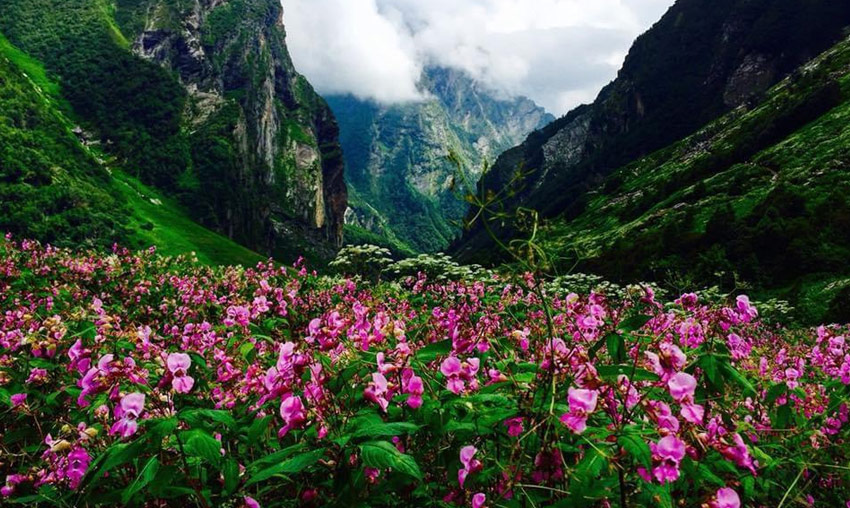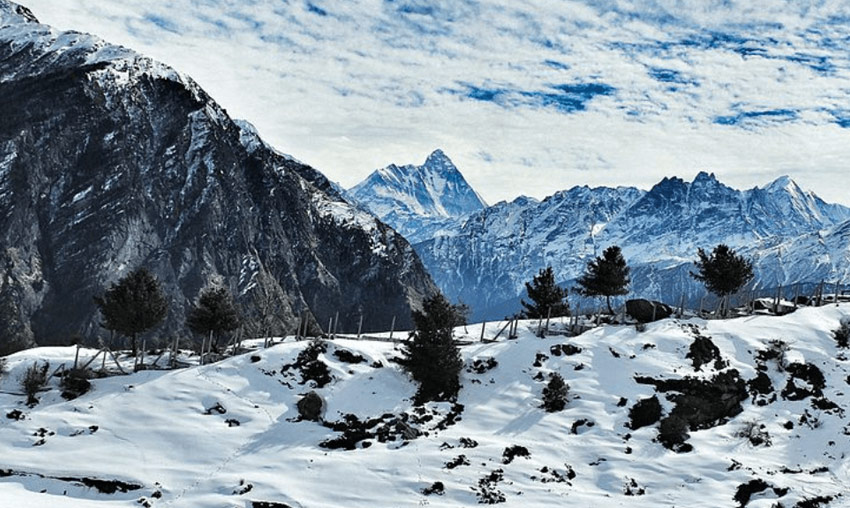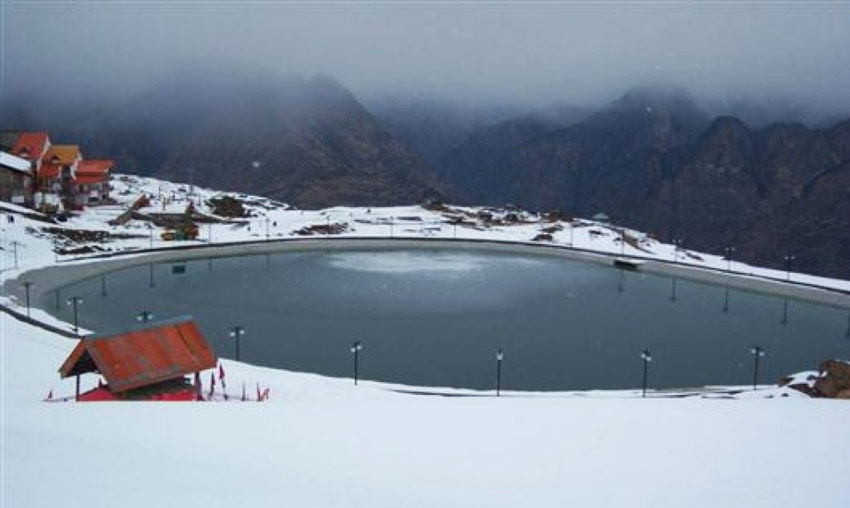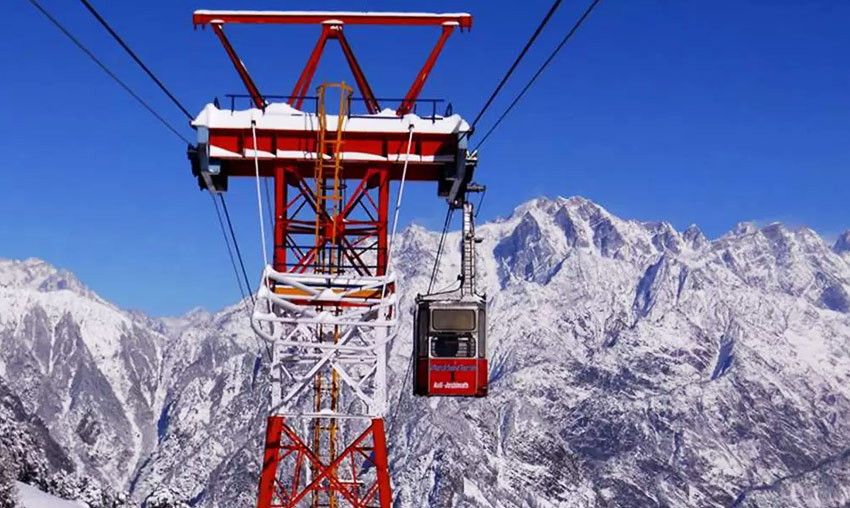Nanda Devi National Park, Joshimath | Trek, & Entry Ticket Fee
The Nanda Devi National Park is located in the Chamoli district of Uttarakhand, close to Nanda Devi, the country’s second-highest peak. One of the world’s most biodiverse areas, this park is a UNESCO World Heritage Site and is home to some of the rarest and most unusual high-altitude plants and animals. The richness of the environment and the stunning views distinguish this national park from all others in the nation.
In order to preserve the region’s unique flora and fauna and to prevent future environmental deterioration, the area was designated a national park in 1982. Numerous species of birds, mammals, plants, trees, and butterflies can be found in the Nanda Devi National Park, which is currently one of the most significant biological hotspots in the world.
The Nanda Devi National Park is a wonderful paradise for adventure seekers, providing fantastic trekking and hiking options. The journey to the base camp is really regarded as one of the hardest. Only six months of the year, from May 1 to October 31, are visitors able to enter Nanda Devi National Park. Additionally, there are innumerable chances to discover the splendour and beauty of nature here. Other well-known tourist attractions around the national park are the Valley of Flowers, Badrinath Temple, and Hemkund Sahib. Being in this significant global biological hotspot is a wonderful way to connect with nature and oneself.
Flora and Fauna At Nanda Devi National Park
Numerous plant and animal species can be found in the rich and plentiful biodiversity of Nanda Devi National Park. Since the park’s forest cover is limited to the Rishi Gorge, fir, birch, and juniper make up the majority of the vegetation. The environment is considerably dryer in the sanctuary’s interior, with virtually no flora close to the Nanda Devi Glacier. This area is home to 312 different plant species, around 17 of which are uncommon.
Animal species such as snow leopards, brown bears, Himalayan black bears, leopards, Himalayan musk deer, common langurs, goral, and bharal are the most prevalent in this area. This area is home to about 80 kinds of birds, such as the Ruby Throat, Blue-fronted Redstart, Indian tree pipit, and rose finches.
Nanda Devi National Park Trek
It is true that the Nanda Devi Sanctuary is a singular geographical feature. This divine but impenetrable refuge is made up of a ring of peaks joined by enormous rock walls that reach no lower than 17,000 feet. The region where the Rishi Ganga empties this enormous basin is the solitary exception. Thus, there is no question that trekking here is an entirely different and unmatched experience.
Several acclimatisation bases are essential because this is one of the world’s most difficult hikes. About 18 kilometres from Munsiyari, in Lilam, begins the main hike to the Nanda Devi East Base Camp. Bugdiar, Gori Ganga, Martoli, Milam Village, Lwani, and the Nanda Devi East Base Camp are the destinations along the trek that starts in Lilam.
History Of Nanda Devi National Park
Despite only being designated as a national park in 1982, the area has a rich and fascinating past. In 1883, W.W. Garden became the first individual to arrive in this area. Unfortunately, his voyage was a failure. The region was one of the least well-known and most difficult to reach in the Himalayas until about 1934. Tilman and N.E. Odell finally scaled the area in 1936, and others did the same.
Since then, the Indian government has designated the Nanda Devi National Park a Biosphere Reserve and UNESCO has designated it a World Heritage Site. In 1939, it was designated as a sanctuary as well. In 1982, it gained the status of a national park by gaining an extra 630 square km. Due to the region’s growing popularity and notoriety, there were too many expeditions here, which caused the ecological harm to this pristine and unspoiled location. In 1984, the decision was made to close the national park.
In May 2013, the national park reopened, although with very strict regulations. For example, only two groups of five people could enter in a single day, and no more than four groups could visit each week.
Best Time To Visit Nanda Devi National Park
The only six months that Nanda Devi National Park is accessible to tourists are May 1 through October 31. The trekkers can enter the national park safely once the snow has cleared. The weather is nice, but it’s usually rather cold, so you’ll need to wear several layers of wool.
Stay Near Nanda Devi National Park
Joshimath, which is only 25 km from the Nanda Devi National Park, should be your first choice for lodging while there. The location offers excellent lodging choices that suit all price ranges.
How to reach Nanda Devi National Park
Motorable roads connect Nanda Devi National Park to Lata hamlet through Joshimath, the park’s entrance point. From most parts of the state, Joshimath is easily accessible by public and private buses. From there, you will need to take a connecting bus or shared jeep to Lata village.
Weather : 5 – 15°C
Tags : National Park
Timings : Before Sunset



